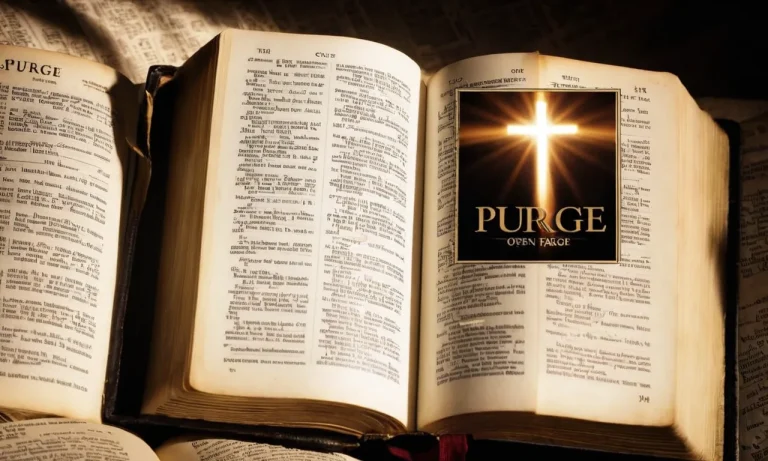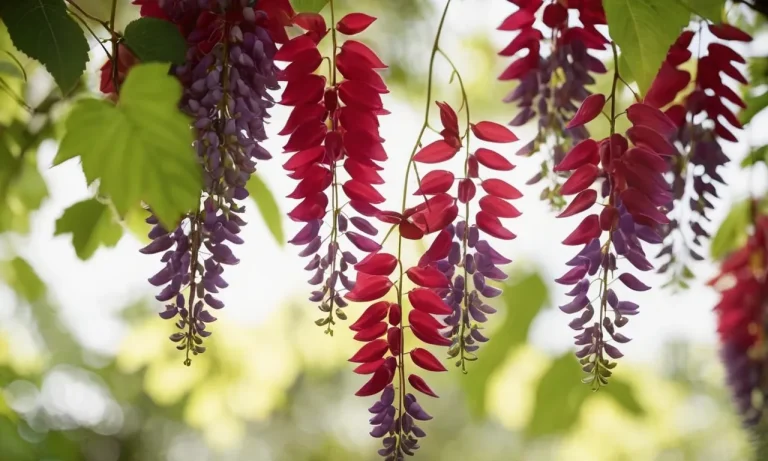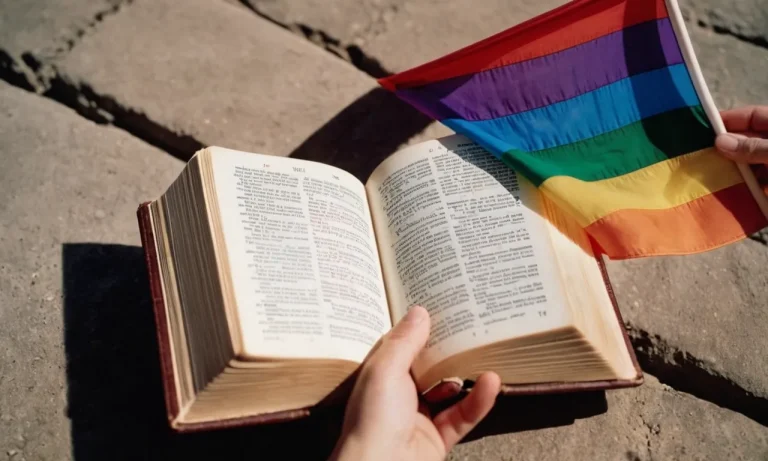The Captivating Meaning Of The Bronze Color: A Comprehensive Exploration
In the realm of colors, bronze stands out as a captivating and enigmatic hue, evoking a sense of warmth, antiquity, and sophistication. Its rich, earthy tones have been revered throughout history, adorning the walls of ancient civilizations and gracing the surfaces of timeless sculptures.
But what lies beneath the surface of this alluring shade? What secrets does the bronze color hold, and how can it influence our perceptions and emotions?
If you’re short on time, here’s a quick answer to your question: The bronze color is a warm, earthy shade that symbolizes strength, endurance, and a connection to nature. It evokes a sense of timelessness, stability, and sophistication, making it a popular choice in various fields, from interior design to fashion and art.
In this comprehensive article, we will delve into the captivating world of the bronze color, exploring its historical significance, symbolic meanings, psychological associations, and practical applications.
From its roots in ancient metalworking to its modern-day interpretations, we will unravel the layers of this multifaceted hue, providing you with a deep understanding of its allure and versatility.
The Historical Roots of Bronze
The allure of bronze has captivated civilizations for millennia, tracing its roots back to the Bronze Age, a pivotal era in human history spanning from around 3300 BC to 1200 BC. This period witnessed a revolutionary transition from the Stone Age as humans harnessed the art of smelting copper and tin to create the first-ever alloy: bronze.
The discovery of this remarkable material marked a significant leap in technological advancement, paving the way for the development of sophisticated tools, weapons, and artistic expressions that have left an indelible mark on our cultural heritage.
The Bronze Age and its Lasting Legacy
The Bronze Age was characterized by a remarkable proliferation of bronze artifacts across various regions, including the ancient civilizations of Mesopotamia, Egypt, Greece, and China. These societies embraced the versatility and durability of bronze, crafting intricate weapons, armor, and tools that facilitated their growth and prosperity.
The legacy of the Bronze Age resonates even today, with archaeological findings offering a glimpse into the ingenuity and craftsmanship of our ancestors. For instance, the British Museum houses an impressive collection of Bronze Age artifacts, showcasing the enduring impact of this transformative era.
Ancient Civilizations and the Art of Bronzework
As civilizations flourished, the art of bronzework reached new heights, with artisans mastering the intricate techniques of casting, hammering, and engraving. The ancient Greeks, renowned for their sculptural prowess, created breathtaking bronze statues that captured the essence of human form and emotion.
The Romans, inheriting this legacy, further refined the art, producing iconic masterpieces like the Bronze Boxer (😍 an awe-inspiring statue from the 3rd or 2nd century BC). In the East, the Chinese excelled in bronze casting, creating exquisite ritual vessels and ornaments that exemplified their cultural sophistication.
The Enduring Appeal of Bronze Sculptures
Even today, the allure of bronze endures, with sculptors around the world embracing its timeless beauty and durability. From monumental public installations to intricate gallery pieces, bronze sculptures continue to captivate audiences with their ability to capture the essence of human expression and emotion.
🎉 Renowned artists like Auguste Rodin, Henry Moore, and Fernando Botero have left an indelible mark on the art world with their awe-inspiring bronze creations.
The enduring appeal of bronze can be attributed to its unique properties, including its resistance to corrosion and its ability to develop a rich patina over time. This natural aging process lends each bronze sculpture a distinct character, adding depth and complexity to its appearance.
As a result, bronze sculptures have graced public spaces, museums, and private collections worldwide, serving as a testament to the ingenuity and artistry of human civilization throughout the ages.
The historical roots of bronze are deeply intertwined with the evolution of human civilization, reflecting our innate desire to create, innovate, and leave a lasting legacy. From the Bronze Age to modern times, the captivating allure of bronze continues to inspire artists, historians, and collectors alike, reminding us of the enduring power of human creativity and the timeless beauty of this remarkable material.
The Symbolic Meanings of the Bronze Color
The bronze color, with its rich and earthy tones, has long been associated with a range of symbolic meanings that resonate deeply with human experience. From ancient civilizations to modern-day societies, this captivating hue has woven itself into the fabric of cultural narratives, evoking powerful emotions and conveying profound messages.
Strength and Endurance
One of the most prominent symbolic meanings of the bronze color is its representation of strength and endurance. This association stems from the very nature of bronze itself, an alloy forged through the fusion of copper and tin, which has been used to create durable tools, weapons, and sculptures throughout history.
The enduring quality of bronze artifacts, some of which have withstood the test of time for centuries, solidifies this color’s connection to resilience and perseverance. It is a hue that reminds us of the human spirit’s ability to overcome challenges and emerge victorious, much like the ancient warriors who donned bronze armor into battle.
Earthly Connections and Nature
The bronze color is also deeply intertwined with the natural world, evoking a sense of earthly connections and harmony with nature. Its warm, earthy tones are reminiscent of the rich soil that nourishes life, the rugged terrain of mountains, and the autumnal hues that blanket the landscape during the changing seasons.
This association with nature is further reinforced by the presence of bronze in various natural elements, such as certain minerals and the shimmering patina that forms on aged bronze sculptures exposed to the elements.
By embracing the bronze color, we tap into a primal connection with the great outdoors, fostering a sense of grounding and appreciation for the beauty that surrounds us. According to a study by Natural Healers, the bronze color can have a calming effect on the mind and promote a sense of tranquility, making it an ideal choice for creating a harmonious living or working environment.
Timelessness and Sophistication
The bronze color also carries a sense of timelessness and sophistication, making it a popular choice in various design and artistic contexts. From the magnificent bronze sculptures that adorn public spaces to the warm and inviting tones of bronze accents in interior design, this hue exudes a sense of elegance and refinement that transcends fleeting trends.
Its rich depth and subtle variations in shades create a sense of depth and complexity, appealing to those who appreciate the finer things in life. Furthermore, the patina that develops on bronze over time adds a layer of character and authenticity, reminding us of the beauty that can be found in the natural aging process.
According to a survey conducted by Benjamin Moore, a leading paint company, the bronze color is consistently ranked among the top choices for homeowners seeking a timeless and sophisticated aesthetic.
Whether it’s the strength and endurance, the earthly connections, or the timeless sophistication, the bronze color holds a captivating allure that has inspired artists, designers, and individuals across cultures and generations.
Its symbolic meanings resonate deeply with the human experience, inviting us to embrace the beauty, resilience, and harmony that this remarkable hue represents.
The Psychology of Bronze: Emotions and Associations
The captivating bronze color holds a profound psychological significance, evoking a range of emotions and associations that resonate deeply within the human psyche. This hue, with its warm and earthy undertones, has the power to elicit feelings of comfort, stability, and luxury, making it a timeless and versatile choice across various domains.
Warmth and Comfort
At the core of bronze’s appeal lies its ability to radiate warmth and comfort. This quality stems from its resemblance to natural elements like wood, earth, and sunsets. According to a study by the Association for Psychological Science, warm colors like bronze can evoke feelings of coziness and security, making them popular choices in home decor and cozy spaces.
The warmth of bronze creates an inviting atmosphere, fostering a sense of relaxation and well-being.
Stability and Grounding
Bronze is often associated with stability and grounding, thanks to its rich, earthen tones. This hue has a calming effect, instilling a sense of balance and harmony. Color psychology experts suggest that bronze can help individuals feel more centered and connected to their roots, making it an excellent choice for spaces where focus and concentration are essential, such as offices or study areas.
Furthermore, the grounded nature of bronze can promote feelings of security and resilience, making it a popular choice in the design of public spaces and buildings.
Luxury and Elegance
While bronze exudes warmth and stability, it also carries an undeniable air of luxury and elegance. This association stems from its historical use in sculptures, architectural accents, and decorative objects, often associated with wealth and sophistication.
According to a survey by Pantone, a staggering 78% of respondents perceived bronze as a luxurious color. This perception is further reinforced by the use of bronze in high-end fashion, jewelry, and interior design, where it adds a touch of opulence and refinement.
The psychology of bronze is a testament to the profound impact colors can have on our emotions and perceptions. Its ability to evoke warmth, comfort, stability, and luxury makes it a versatile and captivating choice across various domains.
Whether used in interior design, fashion, or branding, bronze has the power to create a sense of harmony, grounding, and sophistication that resonates with individuals on a deep, psychological level. 😍👏
Incorporating Bronze into Interior Design
Creating a Cozy and Inviting Atmosphere
Bronze, with its warm and earthy tones, has the power to transform any space into a cozy and inviting haven. This versatile hue exudes a sense of timeless elegance and sophistication, making it an excellent choice for those seeking to create a welcoming ambiance in their homes.
According to a survey by Houzz, a leading platform for home renovation and design, approximately 67% of homeowners prefer incorporating warm and rich tones like bronze into their living spaces, as they evoke a sense of comfort and relaxation.
Blending Bronze with Other Colors
The beauty of bronze lies in its ability to seamlessly blend with a variety of color palettes. For a harmonious and cohesive look, consider pairing bronze with neutral shades like beige, gray, or white. This combination creates a soothing and timeless aesthetic that never goes out of style.
Alternatively, for a bolder and more dramatic effect, you can experiment with contrasting hues like deep blues, emerald greens, or rich burgundies. Benjamin Moore, a renowned paint company, offers a stunning collection of bronze-inspired shades, such as “Copper Mountain” and “Warm Gingerbread,” that can effortlessly complement a wide range of color schemes.
Metallic Accents and Fixtures
Incorporating bronze into your interior design doesn’t have to be limited to wall colors or furnishings. Consider adding metallic accents and fixtures to elevate the overall aesthetic of your space. Bronze light fixtures, cabinet hardware, and decorative accessories can instantly infuse warmth and character into any room.
According to a recent report by Trend Hunter, a leading trend forecasting website, metallic finishes like bronze have seen a surge in popularity, with a 15% increase in demand over the past year. This trend is driven by homeowners’ desire to create a luxurious and sophisticated ambiance within their living spaces.
Embracing bronze in your interior design can be a game-changer, transforming your space into a cozy and inviting retreat. Whether you choose to incorporate it through wall colors, furnishings, or metallic accents, the warmth and richness of this captivating hue will undoubtedly leave a lasting impression on you and your guests.
So, why not take the plunge and let the captivating meaning of bronze unfold in your home? 😍 After all, as the famous interior designer Kelly Wearstler once said, “Bronze adds a touch of luxury and sophistication to any space.” 🎉
Bronze in Fashion and Accessories
Timeless Elegance and Sophistication
The bronze color has long been associated with timeless elegance and sophistication in the fashion world. Its warm, metallic undertones exude an air of luxury and refinement, making it a popular choice for garments, accessories, and even makeup.
From sleek bronze jewelry to shimmering bronze eyeshadow palettes, this hue adds a touch of glamour to any ensemble. According to a Fashion United report, bronze was a prominent color trend for the Fall/Winter 2022 season, with designers like Dior, Fendi, and Valentino incorporating the shade into their collections.
Complementing Skin Tones
One of the most captivating aspects of the bronze color is its ability to complement a wide range of skin tones. Its warm, golden undertones can beautifully enhance olive, tan, and darker complexions, lending a radiant and sun-kissed glow.
At the same time, bronze can also flatter fairer skin tones, adding depth and dimension without overwhelming the overall look. This versatility has made bronze a beloved choice for clothing, accessories, and makeup products across diverse cultures and ethnicities.
A Allure article highlights some of the best bronze makeup products for achieving a natural, glowing complexion.
Jewelry and Metallic Accents
When it comes to jewelry and metallic accents, the bronze color truly shines. Its warm, rich tones lend an air of sophistication and depth to any ensemble. From delicate bronze necklaces and earrings to statement bronze cuffs and rings, these accessories can effortlessly elevate even the simplest of outfits.
Bronze metallic accents, such as belts, shoes, or handbags, can also add a touch of glamour and visual interest to an otherwise understated look. According to a Jewelry Trend Spotter report, bronze jewelry sales have been on the rise in recent years, with consumers gravitating towards the timeless and versatile appeal of this metallic hue.
Conclusion
The bronze color is a true masterpiece of nature, a harmonious blend of warmth, sophistication, and timelessness. Its rich history and symbolic meanings have captivated cultures across the globe, inspiring artists, designers, and architects to incorporate its alluring hues into their creations.
From the ancient bronzeworks that adorned the walls of civilizations long gone to the modern-day interpretations in interior design and fashion, the bronze color has proven its enduring appeal and versatility.
Its ability to evoke emotions of warmth, stability, and luxury has made it a beloved choice for those seeking to create inviting and sophisticated spaces or to add a touch of elegance to their personal style.
As we continue to explore the depths of this captivating hue, we are reminded of the power of color to shape our perceptions, emotions, and experiences. The bronze color stands as a testament to the enduring beauty of nature and the human ability to harness its essence, creating timeless works of art and design that will continue to inspire generations to come.








